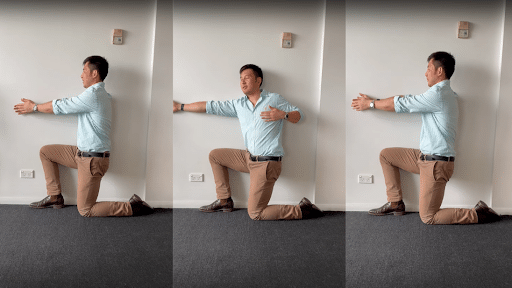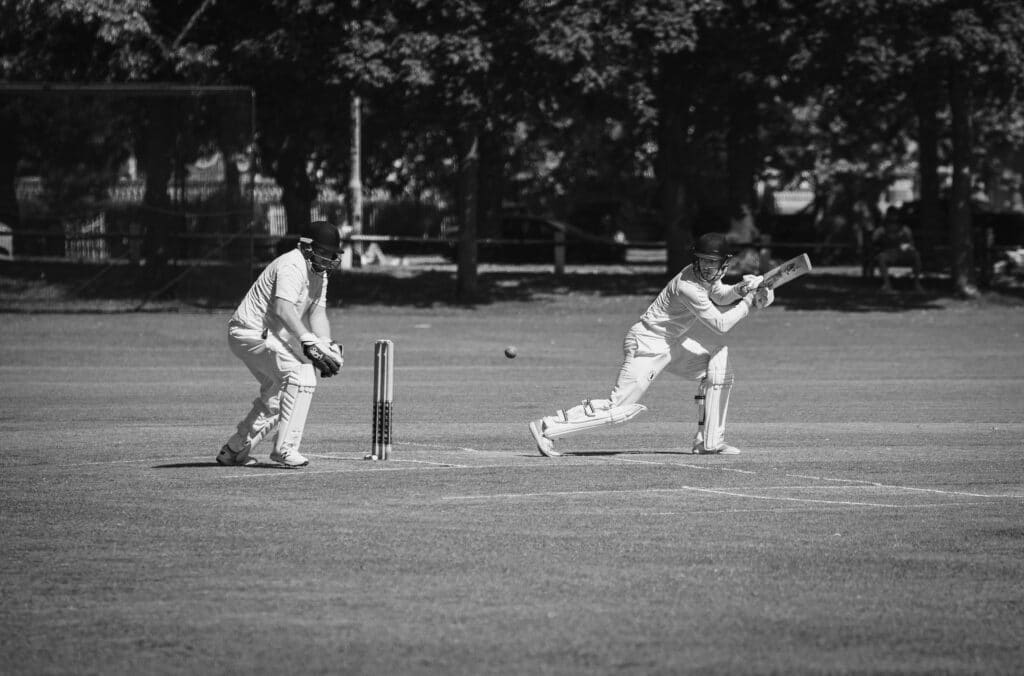The importance of thoracic rotation
What we’ll cover
- Key Insights
- What is thoracic spine?
- What causes a stiff thoracic spine?
- Physiotherapy for a stiff thoracic spine
- Thoracic rotation exercises
- Exercise 1: Half kneeling bow and arrow
- Exercise 2: Half kneeling book opener
- FAQs
- Is spinal cord injury a major healthcare concern in Australia?
- Who can benefit from thoracic rotation exercises?
- How often should I perform thoracic rotation exercises?
The importance of thoracic rotation
Your thoracic or mid-spine is a common area that develops stiffness and has reduced flexibility. Mobility, especially rotation, is important in the thoracic spine as it contributes up to 80% of total back rotation. As a result, reduced rotation can not only cause symptoms and stiffness around the middle of the back, but can be a contributing factor in common conditions including neck pain, headache, low back pain and shoulder pain.
Key Insights
- Crucial for 80% of total back rotation, aiding in spinal flexibility and reducing risks of neck and back pain.
- Comprises 12 vertebrae connected to the rib cage, essential for rotational movements in sports and daily activities like turning the head.
- Triggered by slouched postures, muscle tightness due to repetitive motions, stress, and conditions like arthritis or scoliosis.
- Involves mobilisations, manipulation, and massage to alleviate pain; focuses on strength and mobility to prevent recurrence.
- Include ½ kneeling positions to improve mobility; ensure symmetry and avoid pain, consulting a professional if necessary.
- Seek physiotherapy for persistent stiffness or pain; Malvern East Physiotherapy offers appointments and expert care.
What is thoracic spine?

The thoracic spine is made up of the middle vertebrae of your spine. It consists of 12 vertebrae all of which your rib cage attaches. Whilst the thoracic spine is important for any activities that include rotation such as golf or tennis, it is crucial for movements that we perform every day. For example, movements such as walking, getting in and out of bed and turning your head all require mobility through the middle of your back.
What causes a stiff thoracic spine?
The causes of a stiff thoracic spine can vary significantly and be caused by a number of factors. This includes:
– Sustained and prolonged postures in a slouched position (eg. studying, working, driving)
– Tightness and reduced flexibility in the muscles that attach to the spine (eg. excessive or repetitive lifting, tension/stress)
– Medical conditions including arthritis, scoliosis, osteoporosis or Scheurmann’s disease
Physiotherapy for a stiff thoracic spine
A stiff thoracic spine is one of the most common conditions that we see as physiotherapists. Your physiotherapist can perform a variety of techniques to reduce pain and stiffness including mobilisations, manipulation and massage. Whilst these techniques will dramatically reduce your pain, without improving your strength and performing mobility exercises, symptoms will continue to re-occur.
Physiotherapy is also able to guide you back to full mobility using corrective exercises that target mobility and strength. Clinical pilates is great for improving thoracic mobility as it provides a safe avenue to target the middle back without exacerbating symptoms.
Thoracic rotation exercises

Try these exercises below to improve your thoracic rotation. Importantly, these thoracic rotation stretches should not cause pain or discomfort. If unsure, consult your trusted health professional.
Exercise 1: Half kneeling bow and arrow
Step 1: Start in a ½ kneeling position with your inner leg and hip against the wall
Step 2: Keeping your inside arm against the wall, draw back the outer arm as far as comfortable
Step 3: To increase the stretch, feel free to move the inside arm forwards as you “draw back”
Step 4: Repeat the same movements on both sides
Exercise 2: Half kneeling book opener
Step 1: Start in a ½ kneeling position with your inner leg and hip against the wall
Step 2: Try to rotate your outer hand all the way around and back
Step 3: To make the exercise easier, ensure you keep the inside hand against the wall
Step 4: Repeat the same movements on both sides
If you are experiencing ongoing thoracic stiffness, neck pain or low back pain, see your physiotherapist. Our team at Malvern East Physiotherapy regularly treat these common conditions. To see our team, call us or book online today.
FAQs
Is spinal cord injury a major healthcare concern in Australia?
Yes, injuries of all types pose a major healthcare concern in Australia. According to https://www.aihw.gov.au. In 2022, injuries were the 6th highest cause of total disease burden in Australia, accounting for 8% of total burden of disease (AIHW 2022). (Source: AIHW)
Who can benefit from thoracic rotation exercises?
Anyone can benefit from thoracic rotation exercises, especially individuals experiencing back pain, athletes seeking to enhance performance, and those looking to improve their overall spinal flexibility and mobility.
How often should I perform thoracic rotation exercises?
It is recommended to incorporate thoracic rotation exercises into your daily routine or at least 3-4 times a week to see significant improvements in spinal flexibility and pain relief.


